Lexus IS 250, 350 hit elusive high mark
By John Gilbert
BROOKLYN, MICH. — Every builder of a sports sedan hopes it might be comparable to the legendary BMW 3-Series. Some have come close, most haven’t. Some have missed by a mile. It may well be, however, that Lexus has just found the Holy Grail of sports sedans for 2014, with the IS 250 and IS 350.
Lexus assembled some of the nation’s auto media types to sample both models of the hottest and smallest Lexus sedan at Michigan International Speedway, and after driving from beautiful downtown Jackson, Mich., to the MIS track, and then darting through some exercises at specially set up courses at the track, the realization hit me that the two IS models might reach the elusive peak for a very significant reason. The IS twins have done their best to rise to the BMW 3’s level of quick acceleration, flawless handling, and technical excellence, but they also have found the secret to achieving a level of overall, every-drive exhilaration, which used to be the sole domain of BMW.
We were given autocross curves and straight chutes, and after some spiriting driving in the IS 350, I chose the IS 250 because it was the only car there with all-wheel drive, and my thought was winter-driving folks would need that feature, although they might prefer the more potent IS 350. In that car, I was instructed to accelerate as hard as possible, going between two cones, and approaching several sideways cones pointing right. I was then supposed to swerve aggressively to miss them, then straighten out to finish between another set of cones. The idea was to show off the stability control, and the car’s exceptional agility to miss an accident and retain control.
The final exercise was to do the same thing with stability control turned off, but Lexus officials didn’t trust us to perform it ourselves, but to ride with their professional drivers to fully experience it. Reluctantly, I did that, having watched several drivers make the swerve, then fishtail violently after trying to straighten. My driver did the same thing. Before his next pass, I told him about growing up on steep and slippery avenues of Duluth, Minnesota, and experience in a few emergency driving programs.
“I’m convinced,” I said, “that 90 percent of accidents happen when a driver swerves, and then over-corrects when attempting to straighten out.” He agreed. Then I said, “If I were a pro driver hired by Lexus to show that an emergency swerve can be dangerous without stability control, I might swerve and then over-correct to make it look worse than it was.”
He looked at me with a wry grin, and said, “You’re exactly right.” And with that, he circled around for one last run, sped through the cones, swerved abruptly to the right, and straightened out perfectly, smoothly, and without the fishtail of over-correction.
When I got back to the Lexus officials, all I said was, “This car is even better than you think.”
Such performance can be costly to engineer into a car, but the IS twins — like the BMW 3 — seem to do it naturally, with the coordination of all elements with a seemingly effortless grace. At that, the IS 250 and IS 350 seem moderately priced when compared to targeted competitors, such as the BMW 3, Audi A4, Mercedes E, Cadillac ATS, or Infiniti G37. Among others.
“The entry-luxury segment is a pretty big basket,” said Owen Peacock, national product marketing manager for Lexus. “Buyers might be first-time luxury segment customers, or moving over from other brands, or maybe moving down from larger luxury cars because they might not need all that room anymore. We believe that the new IS should not just be impressive with horsepower and braking, but that it should be cohesive with packaging, design and performance.
“It’s not just going from A to B, but going from A to B and enjoying it.”
Certainly, any success in the midsize sedan — to say nothing of sports-sedan — segment starts with appearance, and the Lexus IS meets that standard with a dramatic look, starting with an exaggerated version of the “spindle” grille, which made its debut on the extremely limited company prototype LF-A sports car, then was altered to work on the larger GS sedans a year ago, and the ES entry-luxury sedan, and this year has been applied to add a sporty dose to the high-end LS luxury sedan. It looks like s spindle standing on end, if you like your spindles to have a larger bottom than top, and it works very well on the more compact IS.
“The GS turned a lot of heads when we brought it out, because it was beautiful and it performed,” said Mike Kroll, the national corporate communications manager for Lexus. “Our chief engineer knew the most fun to drive sedans were the BMW 3-Series, so we went back to defining ‘fun-to-drive.’ It requires precise and immediate response, and we weren’t satisfied with just the computer design. We needed hands-on feeling, so we developed our handling at places like Nurburgring.
“In redesigning the IS, we took the GS platform and shortened it, but we increased the wheelbase by 3 inches. That gave us increased back seat room and more interior comfort, but it had to strike a balance. The standard IS has coil springs, but with adaptive variable suspension, you get a hydraulic air-suspension system that lest you choose the driving style you want,” Kroll explained. “In Eco, the power steering and variable-gear steering ratio are lessened a little from Normal. Sport has firmer suspension, and holds the revs higher as you go through the gears, and Sports-Plus adds adaptive air-suspension that can adjust each of the four corners independently, and, overall, stiffens the suspension and has a quicker steering-gear ratio.”
The Lexus line began in 1989 as the luxury-upgrade line for Toyota. In the evolving years, some of the Lexus models were based on Toyota platforms, with considerable luxury added on. By now, Lexus more than just stands on its own. The entry level luxury ES sedans are no longer built on stretched Camry platforms, but have their own identity. The GS heads off to another direction, as the sports-luxury sedan similar to the BMW 5-series.
Now it’s the IS models who are being renovated, and Lexus hasn’t spared anything in becoming the most tossable, high-performing, fun-to-drive models in the Lexus stable. Akio Toyoda, the corporate scion who also has become chief executive of Toyota and Lexus, is a racer. He vowed to add a dose of true high-performance to the stodgy Toyota and Lexus images. The IS 250 and 350 must be his personal favorites.
“I think they’re the most fun to drive,” said Kroll. “We have the 250, the 250 F Sport, the 350, and the 350 F Sport, and we have all-wheel-drive versions of both, and we deliver each car specially, with a technology specialist making sure each car is custom designed for each customer.”
The performance elements are of utmost importance, naturally, if you’re even pretending to be a sporty sedan. It seemed the IS 250’s 2.5-liter engine might be a 4-cylinder, but this one is a high-output 2.5-liter V6, with 204 horsepower at 6,400 RPMs, and 185 foot-pounds of torque at 4,800 RPMs. It has a 6-speed electronically-controlled automatic transmission, with manual-shift modes that feature paddle shifters for rev-matched downshifts in Sport mode.
The IS 350 has a 3.5-liter V6, with 306 horsepower at 6,400 RPMs and 277 foot-pounds of torque at 4,800 revs. Some of us had the earlier chance to try had the IS-F, an all-out high-performance sports sedan, which gave new meaning to the Lexus “F-Sport” concept. The IS 350 uses the 8-speed, Sport-Direct Shift automatic transmission from the F-Sport, with steering wheel paddle shifters and something called G-force Artificial Intelligence, which automatically selects the optimum gear and downshift pattern depending on the computerized read of G-forces.
Like the IS 250, the IS 350 has a standard rear-wheel-drive configuration, but those who live in climates where the roads are not always dry and smooth will rejoice in the “all-weather” drive system, which is available on both models, and is an all-wheel-drive system that automatically varies front-rear torque balance from 50-50 to 30-70 to assure optimum traction.
Both models also have Drive Mode Select, a system that starts out with Eco, Normal, and Sport modes, and in the AWD models, a fourth click gets you to Snow mode. In addition, there is an available F Sport package, which includes unique 18-inch wheels and special suspension tuning, with unique exterior and interior design touches. That’s available on IS 250 and the IS 350 with either RWD or AWD.
In the IS 350, there also is a Sports-S-Plus system, which moves a high-performance sedan up to a higher-performance level of quick-response handling. If you get all those upgrade packages, you also can choose AVS, or Adaptive Variable Suspension, to allow the IS 350 F Sport driver to fine tune ride characteristics for either everyday driving comfort or all-out agility and body control.
The IS 350 and the IS 250 Sport versions, a unique sound-generating device creates a “more sporting” engine report.
As for price, the IS 250 starts at $35,950, or $38,485 for all-wheel-drive. The IS 350 starts at $39,465 for rear drive — actually 2.1 percent lower than the 2013 model, or $41,700 for the AWD version. Standard features on the new model are valued at $1,400, as well, with high-intensity discharge headlights with L-shaped LED running lights, paddle shifter, dual climate control, remote touch interface, 4.2 inch display screen, and a multimedia system that delivers real-time traffic and weather alerts through HD radio, without need for satellite radio subscription.
Available packages include Premium, Luxury and FSport, available throughout all model ranges. The Luxury package, for example, costs $3,665 and includes perforated leather seats, linear wood trim, electro-chromatic exterior mirrors with reverse tilt, rain-sensing wipers, driver seat memory settings, power tilt-telescope steering wheel, center stack knee pads, blind-spot monitor and rear cross traffic alert.
By the time you get up to the IS 350 F Sport, you have moved beyond BMW 3-Series territory and are in the realm of the BMW M3, at a bargain price.
Comments
Tell me what you're thinking...
and oh, if you want a pic to show with your comment, go get a gravatar!


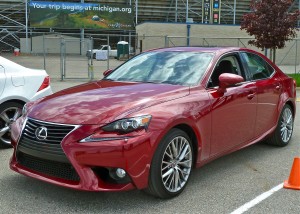
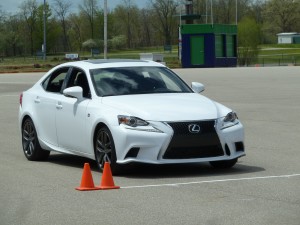
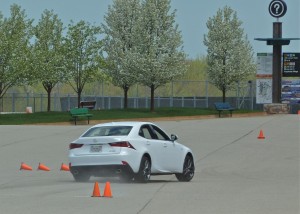
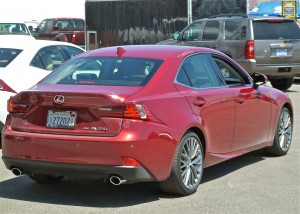
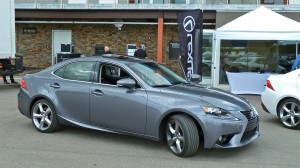
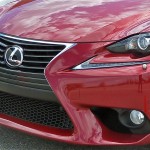
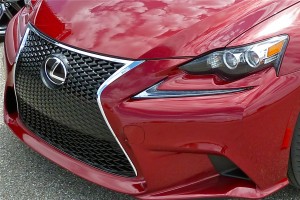
 John Gilbert is a lifetime Minnesotan and career journalist, specializing in cars and sports during and since spending 30 years at the Minneapolis Tribune, now the Star Tribune. More recently, he has continued translating the high-tech world of autos and sharing his passionate insights as a freelance writer/photographer/broadcaster. A member of the prestigious North American Car and Truck of the Year jury since 1993. John can be heard Monday-Friday from 9-11am on 610 KDAL(www.kdal610.com) on the "John Gilbert Show," and writes a column in the Duluth Reader.
John Gilbert is a lifetime Minnesotan and career journalist, specializing in cars and sports during and since spending 30 years at the Minneapolis Tribune, now the Star Tribune. More recently, he has continued translating the high-tech world of autos and sharing his passionate insights as a freelance writer/photographer/broadcaster. A member of the prestigious North American Car and Truck of the Year jury since 1993. John can be heard Monday-Friday from 9-11am on 610 KDAL(www.kdal610.com) on the "John Gilbert Show," and writes a column in the Duluth Reader.